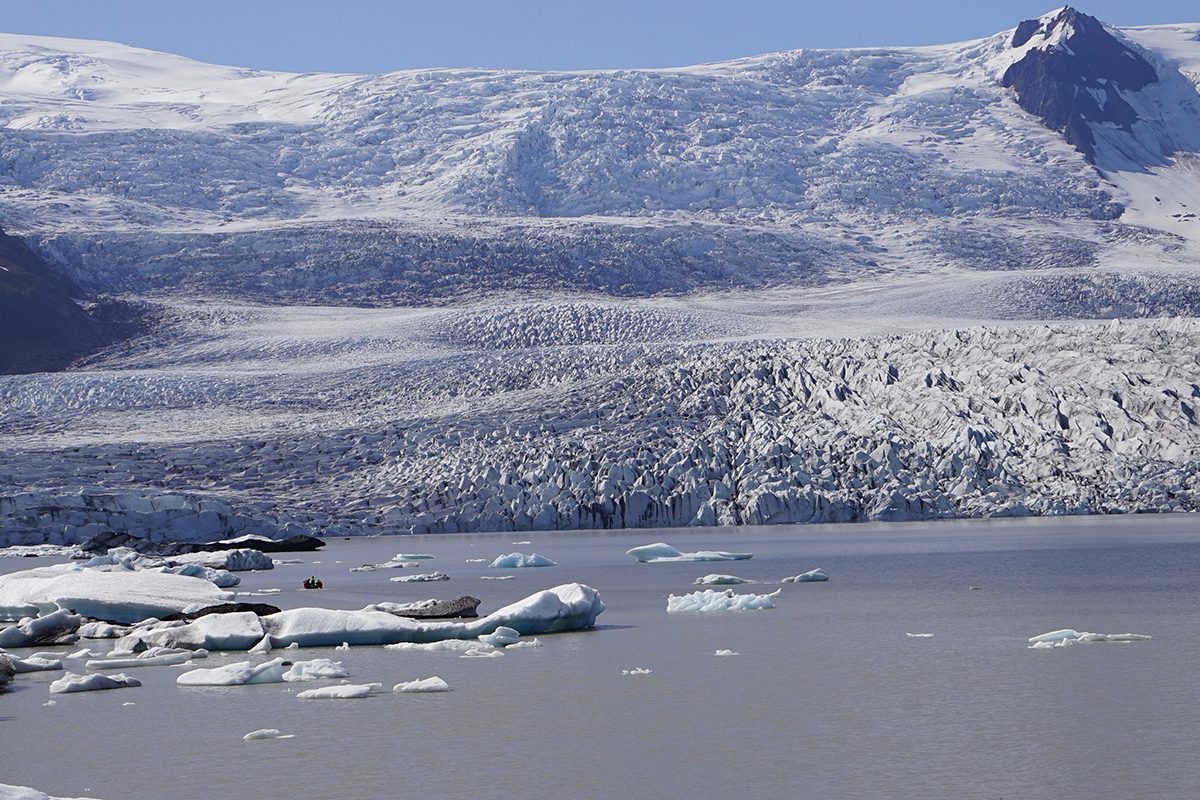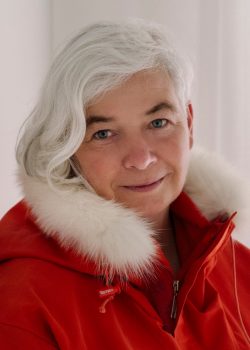
Greenland glacier photo. Credit: Image by Bernd Hildebrandt Pixabay
Dreams of ice
A new Canada Excellence Research Chair has joined the University of Manitoba, adding to the university’s knowledge in the Arctic. Dorthe Dahl-Jensen focuses on a discipline new to the university: glaciology.
Currently a professor at the Centre for Ice and Climate at the Niels Bohr Institute at the University of Copenhagen, Dahl-Jensen has been doing fieldwork on the Greenland ice sheet most summers since 1981, where international teams of researchers drill down to extract ice cores, trying to answer questions like how old the ice is, whether Greenland was ever ice-free, and what kinds of abrupt climate shifts took place in the past.
“It’s very special to hold the deep ice cores with an age of around 1 million years. When I look at such an old ice core, I try to imagine what history it contains,” says Dahl-Jensen.
Her main research has been in analysis of ice core data in conjunction with models to reconstruct the past climate and its impact on the Greenland ice sheet and our global climate. Her work also seeks to use the paleo records to inform us about contemporary and future climates, particularly processes leading to rapid rates of climate change.
Much of her work focuses on ice streams, the part of an ice sheet that moves significantly faster than the surrounding glacier, often with some water underneath to help the ice slide.
Dahl-Jensen spent much of her childhood in Switzerland, where her father worked at CERN (known for its particle collider), and where the young girl watched physicists make LEGO histograms. But her introduction to glaciology came via the outdoors, where she loved climbing and exploring glaciers. In 2001, she became the first female physics professor in Denmark.
Dahl-Jensen is excited about the new research opportunities opened up by the CERC funding.
“One of the first projects we will initiate is an ice-core drilling project through the Müller ice cap on Axel Heibergs in the very North. The project will form a collaboration between Canadian and Danish researchers and allow a reconstruction of the sea ice 10,000 years back in time.”
She plans to study Canadian Devon and Agassiz ice cores along with the Greenland ice cores to further her knowledge on paleo-information. The risk of future abrupt changes can be studied through research on paleo-climate, figuring out what kinds of abrupt climate changes took place in the past.
Ice research itself has changed during the 30-plus years of Dahl-Jensen’s career: she jokes that drones are one new investigation tool that gets everyone excited, with their potential to map the edges of glaciers.
For the past 15 years, Dahl-Jensen has led a research group of 60 to 70 scientists, young researchers, technical and administrative staff in her department at the University of Copenhagen. Among her many awards, Dahl-Jensen is technically a knight: she received a medal from the Queen of Denmark proclaiming her a Knight of the Order of Dannebrog in 2010.
And on an occasion that may or may not have surprised the little kid who loved her grade-one physics lessons in Switzerland, she was invited back to CERN in 2014 to give a talk on how to communicate with the public about climate, at the same institute where she used to play with LEGO on the weekends.
Research at the University of Manitoba is partially supported by funding from the Government of Canada Research Support Fund.








As an Canadian with elements of Danish heritage, I am most interested to learn about Dahl-Jensen’s career. I live near a lake Agassiz escarpment and am fascinated to consider the history that is underlying.